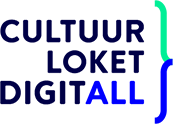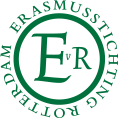Esther Jansma

Esther Jansma
Esther Jansma made her debut with Stem onder mijn bed (Voice under my Bed, 1988) after which she published Bloem, steen (Flower, Stone, 1990). In her much-acclaimed third collection, Waaigat (1993) the poet distances herself from autobiographical details. Her fourth book, Picknick op de wenteltrap (Picnic on the Spiral Staircase, 1997), is comprised of short sketches from the perspective of a small child. Prose, but so poetic that it blurs the borderline between the genres. Spring 1998 saw the appearance of Hier is de tijd (Time Is Here) which was awarded the prestigious VSB Poetry Prize in 1999, followed by Dakruiters (Spires, 2000), which won the Hugues C. Pernath Prize 2001. In 2005 Jansma published her latest volume: Alles is nieuw (Everything is New, 2005). With this collection she was –once again- nominated for the VSB Poetry Prize, and awarded the A. Roland Holst Penning 2006. This year also saw the publication of her collected poetry: Altijd vandaag (Always Today, 2006).
It is fitting that Esther Jansma’s day job as an archeologist involves dating wood through its annual rings. Deciphering the traces left by time: what could be more poetic? For Jansma a poet is:
The rag-and-bone man, collector of
remnants, moments, cracks
in things.
Her first collection is a return to her own childhood. She summons up an unstable world in which her father disappeared, the same world she recalls in the prose pieces in Picknick op de wenteltrap. Everything in this world can lead to questions: “How long does a moment take?” or “What’s a day?” After her father disappears, the world becomes even less stable and the comforting world of fantasy is suddenly off-limits: “We’re not princesses, after all. Princesses aren’t this unlucky.”
Jansma’s poetic universe has expanded since her first books and in Waaigat it is infinitely vast. Just as the woman Juana in one of her poems addresses ‘Brother Cloud’, the poet’s perspective now embraces the whole world, the sea and the moon. The world takes on surrealistic and expressive dimensions but the stakes are still the same. The poet still vainly and stubbornly struggles to bring something to life in her poetry. The fact that the life-giving powers of the word are limited to the confines of the poem, does not necessarily lead to a feeling of poetic impotence: Jansma explores and exploits poetry’s limitations.
In Hier is de tijd Jansma’s struggles and explorations continue. Time permeates the collection, along with all elements that are related to time: loss, death and bereavement, history and archaeology. Jansma devotes great effort to language itself, the poetic tool par excellence to tackle time comprehensively, although often in vain.
In Dakruiters Jansma picks up the thread where she left off at the end of Hier is de tijd: with the poem ‘Afwezigheid’ (Absence). The ‘Hebben’ (Having) series with which the collection opens starts at this poem and eventually ends, via nine others, at ‘Aanwezigheid’ (Presence). After a second section, Dakruiters finishes with the long, epic poem ‘Duizend’ (Thousand), in which Jansma sketches one thousand years of human history, up to the year 1999. In 2005 she modestly contributed to history in her own familiar way, with the appearance of a new collection of poems: Alles is nieuw.
“This is poetry that oscillates between dazzling exuberance and bitter seriousness, between the ever-renewable game of words and the irrevocability of death. It is poetry that, due to its refined form, demonstrates the degree to which playing and understanding are interrelated.”
Koen Vergeer in Ons Erfdeel
“Waaigat is a harsh, versatile, colourful collection, with life and death as equal forces. It is Jansma’s best work yet, full of mysterious forces which keep the poet and reader spellbound.”
Rob Schouten in Vrij Nederland
“Hier is de tijd does what the title promises, for it brings the time in focus. And in doing so, Esther Jansma shows her mastery which is still unequalled by any poets of her generation.”
Arie van den Berg in NRC Handelsblad
Bibliography
Poetry
Stem onder mijn bed. De Arbeiderspers, Amsterdam 1988.
Bloem, steen. De Arbeiderspers, Amsterdam 1990.
Waaigat. De Arbeiderspers, Amsterdam 1993.
Sporen. Atalantapers, Baarn 1996. In collaboration with Rutger Kopland.
Hier is de tijd. De Arbeiderspers, Amsterdam 1998.
Hebben. Atalantapers, Baarn 1999.
Duizend. De Arbeiderspers, Amsterdam, 1999. Published to celebrate the turn of the year 1999-2000.
Dakruiters. De Arbeiderspers, Amsterdam 2000.
Alles is nieuw. De Arbeiderspers, Amsterdam 2005.
Altijd vandaag. Verzamelde gedichten 1988-2005. De Arbeiderspers, Amsterdam 2006.
Eerst, Abeiderspers, Amsterdam, 2010
Prose
Picknick op de wenteltrap. De Arbeiderspers, Amsterdam 1997.
Essays
Mag Ik Orpheus Zijn?, De Arbeiderspers, Amsterdam, 2011
Miscellaneous
RemembeRINGs: the development and application of local and regional tree-ring chronologies of oak for the purposes of archaeological and historical research in the Netherlands. Rijksdienst voor het Oudheidkundig Bodemonderzoek, Amersfoort 1995; thesis University of Amsterdam.
Translated poetry
What it is (Bloodaxe Books, Tarset 2008, English translations by Francis R. Jones)
Translations of Esther Jansma’s poems have also been published in reviews and anthologies in Finland, France, Germany, Hungary, Russia, Sweden and the US.
Links
In English:
Jansma during the UK Writing on the Wall project in 2004
In Swedish:
Jansma in Lyrikvännen
In Dutch:
Jansma at the Koninklijke Bibliotheek
Jansma’s publisher De Arbeiderspers
Video:
Esther Jansma reading and discussing her poems in English and Dutch, filmed by Neil Astley in Ledbury; What it is
Sponsors
























